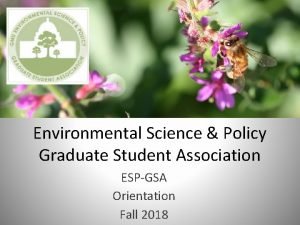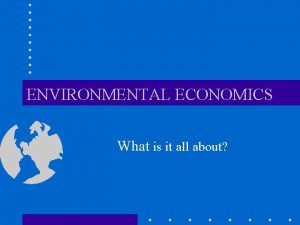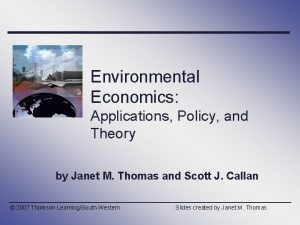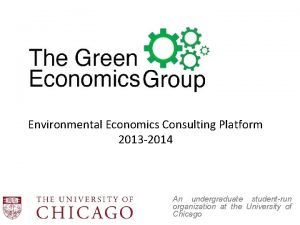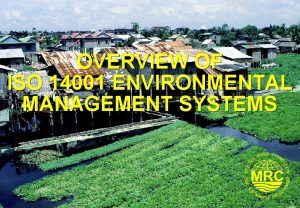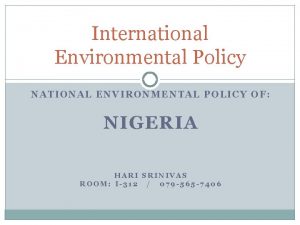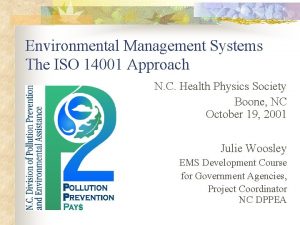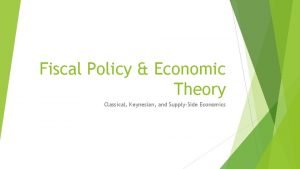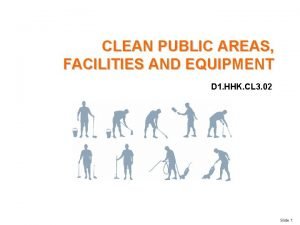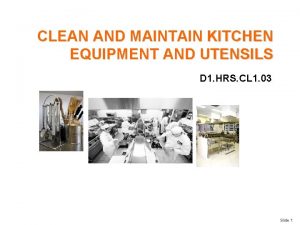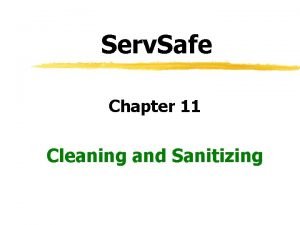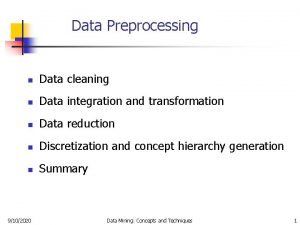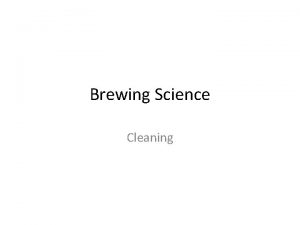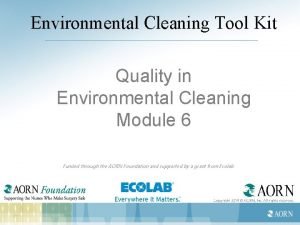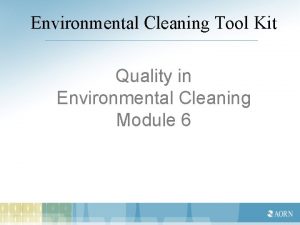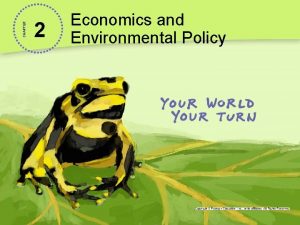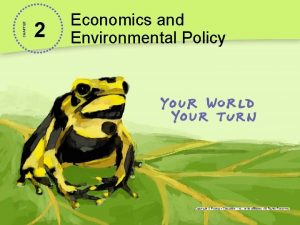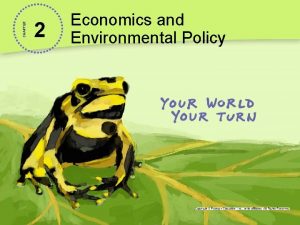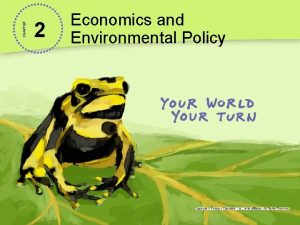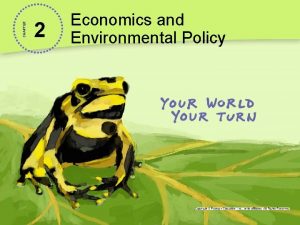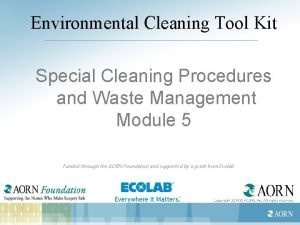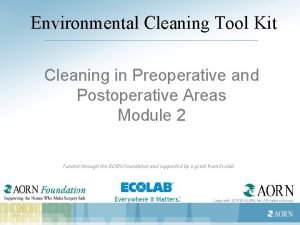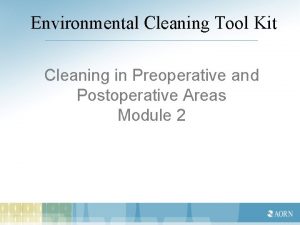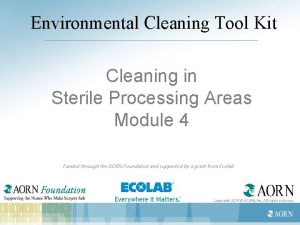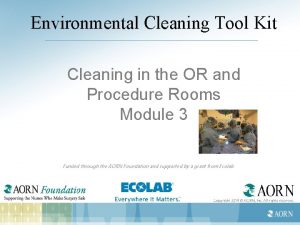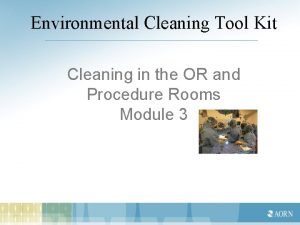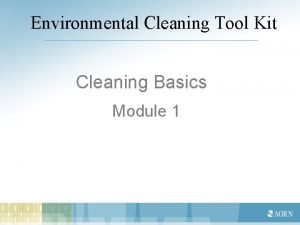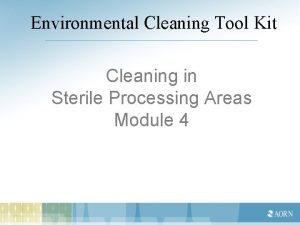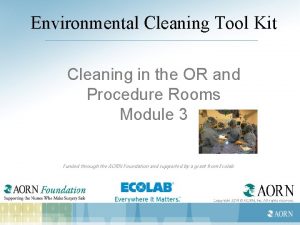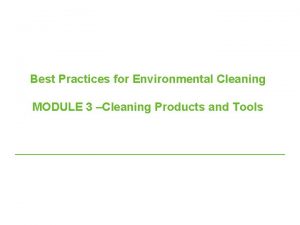CHAPTER 2 Economics and Environmental Policy Cleaning the























- Slides: 23

CHAPTER 2 Economics and Environmental Policy

Cleaning the Tides of San Diego and Tijuana • The heavily polluted Tijuana River crosses over from Mexico to the U. S. and empties into the Pacific Ocean near San Diego, California, forcing frequent beach closures. • Pollution sources include U. S. -owned factories as well as Mexican farms, homes, and sewage treatment plants. • In 1990 the U. S. and Mexico agreed to build a wastewater treatment plant, but construction has yet to be completed. Talk About It Why is the pollution problem in the Tijuana River particularly difficult to solve? How does this case illustrate the connections between the environment, the economy, and government policy?

Lesson 2. 1 Economics A 1997 study calculated the overall economic value of ecosystems worldwide at about $33 trillion per year— more than the combined gross domestic product (GDP) of every nation in the world at the time.

Lesson 2. 1 Economics What Is Economics? • The study of how resources are used and distributed • Markets tend to move toward equilibrium, where demand for a product matches supply. • Cost-benefit analysis is a decision-making tool that compares an activity’s gains and costs.

Lesson 2. 1 Economics and the Environment • Economies depend on the environment for goods and services. • Goods: Sunlight, fresh water, timber, and fossil fuels • Services: Nutrient cycling and purification of air and water • Economic activity can negatively affect the environment, which in turn can negatively affect economies.

Lesson 2. 1 Economics Harmful Economic Assumptions • These long-held economic assumptions have had negative impacts on the environment: • Costs and benefits only affect buyers and sellers. • Short-term costs and benefits should be emphasized. • Resources are unlimited. • Economic growth is continual.

Lesson 2. 1 Economics Environmental Economics • Applies the principles of Earth’s systems to economics • Argues that economies cannot be sustainable unless environmental issues are addressed • Assigns market values to ecosystem services • Suggests that market failure will occur unless market values reflect environmental costs and benefits Clear views and natural beauty have aesthetic value, which is a type of non-market value.

Lesson 2. 1 Economics Consumer and Corporate Responses • Changing consumer values can drive corporations to pursue sustainability. • Ecolabeling is an example of a corporate response to the call for sustainable goods and services. Did You Know? Organic farming is one of the fastest-growing segments of U. S. agriculture. Land devoted to growing organic has expanded by about 15% each year since 2002.

Lesson 2. 2 United States Environmental Policy The Homestead Act of 1862 allowed any citizen, for just $16, to claim 65 hectares (160 acres) of public land, as long as they lived on it for five years and either built a house or cultivated the land.

Lesson 2. 2 United States Environmental Policy What Is Environmental Policy? • A set of general plans and principles for interactions between humans and the environment • Effective environmental policy involves input from science, ethics, and economics. • In the U. S. , all three branches of government (legislative, executive, and judicial) are involved in federal environmental policy.

Lesson 2. 2 United States Environmental Policy State and Local Environmental Policy • State and local environmental policies cannot violate the U. S. Constitution. • The strength of environmental policy differs from state to state. • States that experience environmental disasters tend to have stronger environmental laws.

Lesson 2. 2 United States Environmental Policy History of U. S. Environmental Policy: The First Period (1780 s to late-1800 s) • Laws enacted during this period dealt primarily with management of public lands as the nation expanded west. • General feeling was that resources and land were in endless supply. Long Lake in the Rocky Mountains, near Ward, CO

Lesson 2. 2 United States Environmental Policy The Second Period (late 1800 s to mid-1900 s) • Policies sought to reduce environmental problems associated with westward expansion. • Led to the formation of national forest system and national park system

Lesson 2. 2 United States Environmental Policy The Third Period (mid- to late-1900 s) • Dense populations led to increasing resource consumption and pollution. • Silent Spring and fires on the Cuyahoga River raised environmental awareness. • Policy began to reflect the connection between human and environmental health. Did You Know? Rachel Carson’s Silent Spring, published in 1962, awakened the public to the dangers of industrial chemicals and DDT.

Lesson 2. 2 United States Environmental Policy Modern U. S. Environmental Policy • National Environmental Policy Act: Requires government agencies and contractors to evaluate the environmental impact of a project; led to the formation of the EPA • Environmental Protection Agency (EPA): Responsible for monitoring, enforcing, and researching environmental quality

Lesson 2. 3 International Environmental Policy and Approaches The Environmental Policy Process

Environmental Law United States Environmental Protection Agency

Established December 2, 1970 • Mission • protect human health and to safeguard the natural environment—air, water, and land—upon which life depends.

Major Accomplishments • 1970 s • Clean Water Act • Clean Air Act • Pesticide Control Act • DDT banned • Safe Drinking Water Act • Toxic Substance Control Act • Resource Recovery and Conservation Act

Major Accomplishments • 1980 s • Supervises TMI clean up • Superfund Law • Supports Chesapeake Bay Clean-up • Indoor Radon Abatement Act passed • Ocean Dumping Ban Act passed

Major Accomplishments • 1990 s • Clean Air Act Amendments • Pollution Prevention Act • Commit to Environmental Education • EPA requires full phaseout of CFCs • Food Quality Prevention Act

Major Accomplishments • 2000 s • EPA Homeland Security Strategy • Clean Bus USA program • Mercury Emissions Regulations on Power plants • Clean Air Interstate Rule • Clean Air Mercury Rule • EPA purchases green power equal to their energy use

Superfund • Set up to pay for clean up of past hazardous waste sites • Love Canal, located in New York near Niagara Falls, was the first Superfund site
 Environmental science chapter 2
Environmental science chapter 2 Esp gmu
Esp gmu School of business and economics maastricht
School of business and economics maastricht Wireless health
Wireless health Externalities in environmental economics
Externalities in environmental economics Scope of environmental economics
Scope of environmental economics Scope of environmental economics
Scope of environmental economics Equimarginal principle
Equimarginal principle Environmental economics consulting
Environmental economics consulting Iso 14001 summary
Iso 14001 summary Mobil livesco
Mobil livesco Iso 14001 environmental policy statement examples
Iso 14001 environmental policy statement examples What is mathematical economics
What is mathematical economics Ib economics fiscal policy
Ib economics fiscal policy Classical economics vs keynesian
Classical economics vs keynesian Chapter 15:2 bioterrorism
Chapter 15:2 bioterrorism Chapter 15:3 washing hands
Chapter 15:3 washing hands Data quality and data cleaning an overview
Data quality and data cleaning an overview Clean public areas, facilities and equipment
Clean public areas, facilities and equipment Cleaning and maintaining kitchen premises
Cleaning and maintaining kitchen premises Servsafe cleaning and sanitizing
Servsafe cleaning and sanitizing Data quality and data cleaning an overview
Data quality and data cleaning an overview Data quality and data cleaning an overview
Data quality and data cleaning an overview Data integration in data preprocessing
Data integration in data preprocessing

